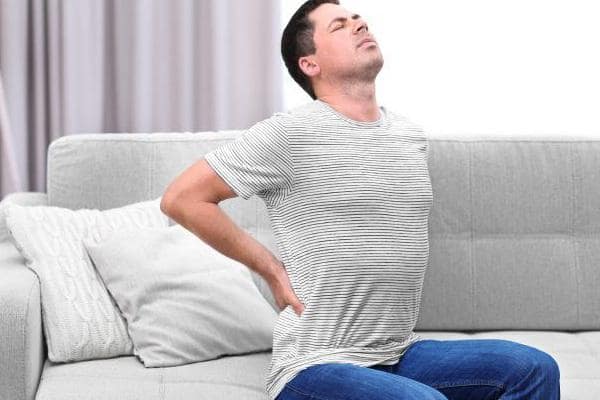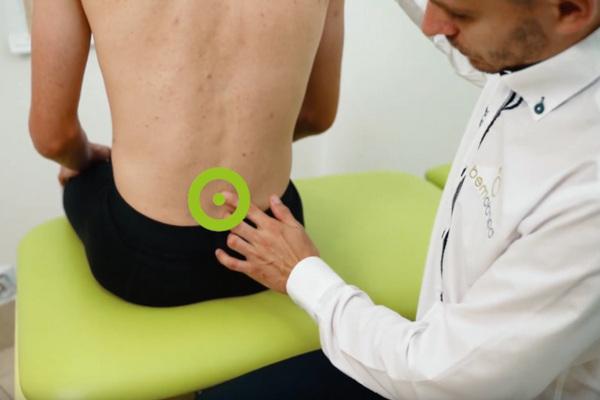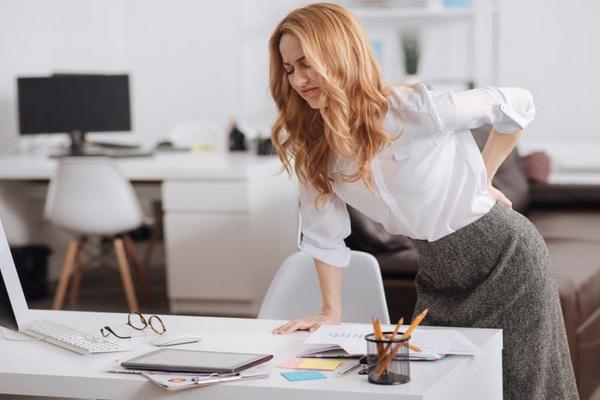Зміст
According to statistics, up to 80% of our society have experienced pain in the lumbar spine at least once in their life. So we can say with confidence that this is already a problem of civilization.
Almost everyone complains of back pain – young people, middle-aged and elderly people. What is the most common cause of low back pain? Can you somehow get rid of this ailment? You will find the answers to all these questions in our article.
Pain in the lumbar spine – the cause may be a sedentary lifestyle

Our lifestyle has a significant impact on our health – there is no doubt about that. The progress of civilization over the past few decades has brought about tremendous changes in lifestyles, especially in developed countries. We have less and less time to rest and exercise. The sheer volume of daily chores makes us more and more nervous. We also carry heavy objects with us from time to time and sit in front of computer monitors for hours (often in the wrong position). All this will negatively affect health, including the condition of our spine.
Pain in the lumbar spine is very often caused by degenerative changes in the discs and vertebrae, the likelihood of which increases with age. Below, we will discuss the most common degenerative changes in the spine.
Intervertebral disc degeneration …
… also commonly known as disk. This is one of the most common causes of pain in the lumbar spine. Degeneration between the vertebral discs usually occurs due to repetitive microtrauma, and therefore due to dehydration and damage to the annulus fibrosus. Concomitant inflammation leads to degenerative changes in the nucleus pulposus.
As a result, it can swell and put pressure on the spinal cord and nerves that branch off from it. This condition, commonly known as disc prolapse, can affect any part of the spine, but most often it affects the lumbar region. The pain associated with a hernia of the lumbar spine, if there is pressure on the nerves, is usually quite severe. It can also spread to the thigh or leg, cause tingling, sensory disturbances, muscle weakness, and limit range of motion.
Degeneration of the interscapular joints
Osteoarthritis is another possible cause of pain in the lumbar spine. This type of degeneration most often occurs when the ligaments and joint capsule of the joints of the spine contract. Women and obese people are more prone to degeneration of the appendages. It may or may not cause lower back pain. The resulting pain may extend to the buttocks or cover the entire lumbar region.
Degeneration of the vertebral bodies
Degeneration of the vertebral bodies is most often associated with the formation of so-called osteophytes, that is, bone growths along the periphery of these rods. If such growths occur inside the spinal canal, it can narrow, that is, stenosis. Narrowing of the spinal canal leads to compression of the nerve roots, the meningeal sac, and nearby blood vessels. This condition can cause chronic back pain, limb pain, and dysesthesia in the limbs.
Blockage of the sacroiliac joint
Blockage of the sacroiliac joint can occur, for example, when jumping on one leg, falling, or in an inappropriate sleeping position. Pain, sometimes quite severe, can occur when the pelvis rotates and spread to the buttock. If the joint is locked for too long, the pelvis can rotate. Then there is a risk that one limb will be overloaded, and one limb is visually shortened.
Back pain can be prevented!
The first step to preventing back pain is to make lifestyle changes. The main element of prevention will be correct posture – both while sitting and while sleeping. So sit up straight, don’t slouch, and avoid unnatural torso twists. Another important point is physical activity. It’s not about pouring sweat in the gym. Our spine needs moderate but regular exercise. To keep him in good shape, a walk or visit to the pool is enough.
If you need to move something heavy, do it ergonomically. Instead of reaching for an object on straight legs, sit down and lift it. Try to engage your abdominal and leg muscles, not your spine.
Back pain is often the result of obesity, so always maintain a healthy body weight. Also, avoid high-heeled shoes and sleep on a harder mattress, preferably on your side. On the other hand, if you are doing work that requires hours of sitting at the computer, provide adequate support for your spine. Also, if possible, try to get up from time to time to take a few steps.
Physiotherapy for the treatment of pain in the lumbar spine

Back pain is currently treated with a variety of treatments. Most often it is conservative treatment (only a small percentage of patients with back pain are suitable for surgery). The procedure is most often based on kinesitherapy (motion therapy) and physical medicine procedures using devices that emit physical stimuli. When treating pain in the lumbar spine, he uses the following physiotherapy procedures:
- kinesitherapy;
- magnetotherapy;
- electrotherapy;
- cryotherapy;
- ultrasound;
- laser therapy;
- massotherapy
- stabilization training
- selection of suitable orthopedic insoles.
Of course, the entire treatment of back pain should be closely monitored by an experienced physical therapist.








